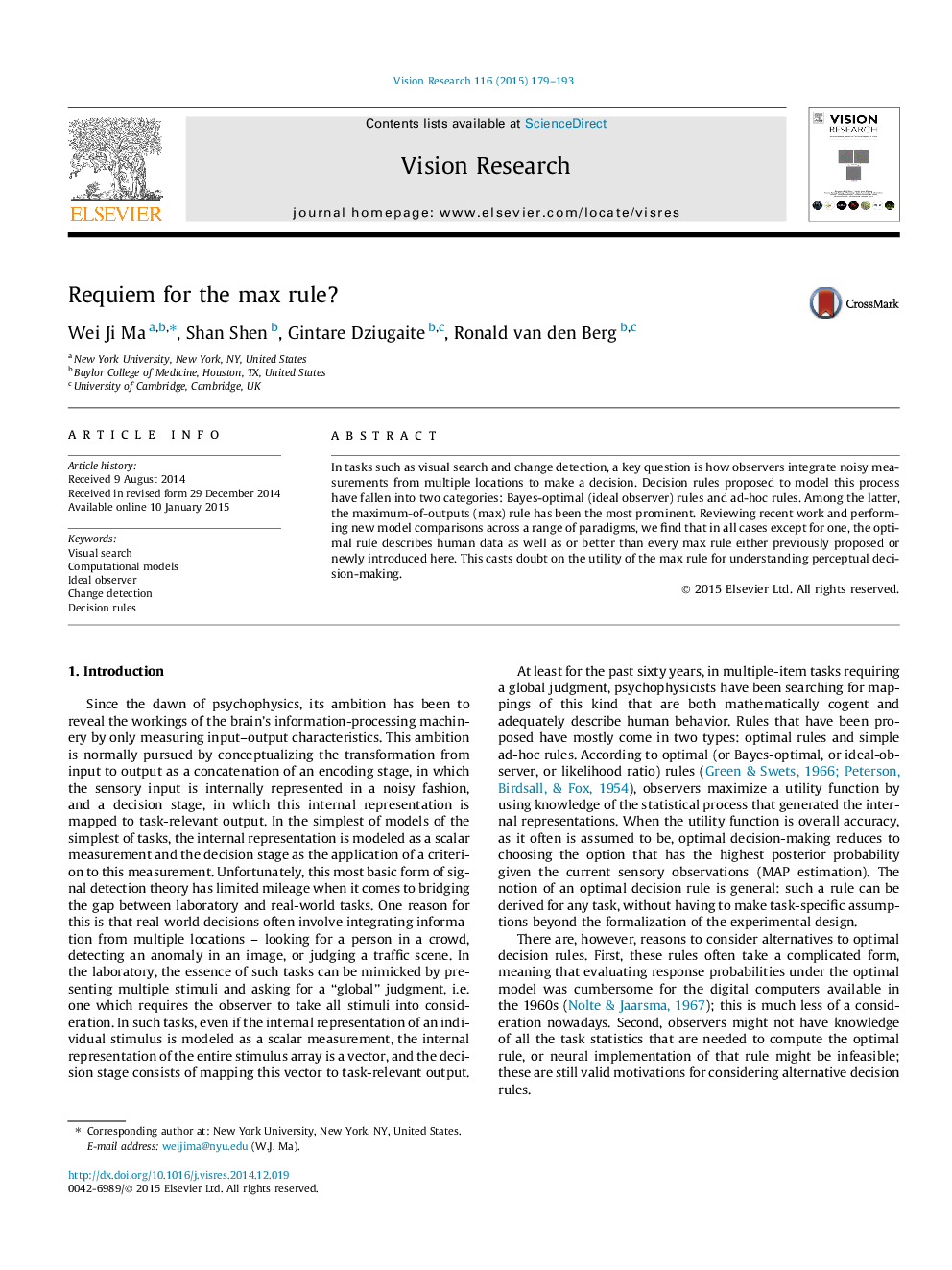| Article ID | Journal | Published Year | Pages | File Type |
|---|---|---|---|---|
| 4033621 | Vision Research | 2015 | 15 Pages |
•We derive optimal decision rules for many multiple-item perceptual tasks.•“Max” rules almost never describe human data better than the optimal rule.•There is no evidence for people combining local decisions into a global decision.•The optimal rule should be taken as the basis for neural models.
In tasks such as visual search and change detection, a key question is how observers integrate noisy measurements from multiple locations to make a decision. Decision rules proposed to model this process have fallen into two categories: Bayes-optimal (ideal observer) rules and ad-hoc rules. Among the latter, the maximum-of-outputs (max) rule has been the most prominent. Reviewing recent work and performing new model comparisons across a range of paradigms, we find that in all cases except for one, the optimal rule describes human data as well as or better than every max rule either previously proposed or newly introduced here. This casts doubt on the utility of the max rule for understanding perceptual decision-making.
